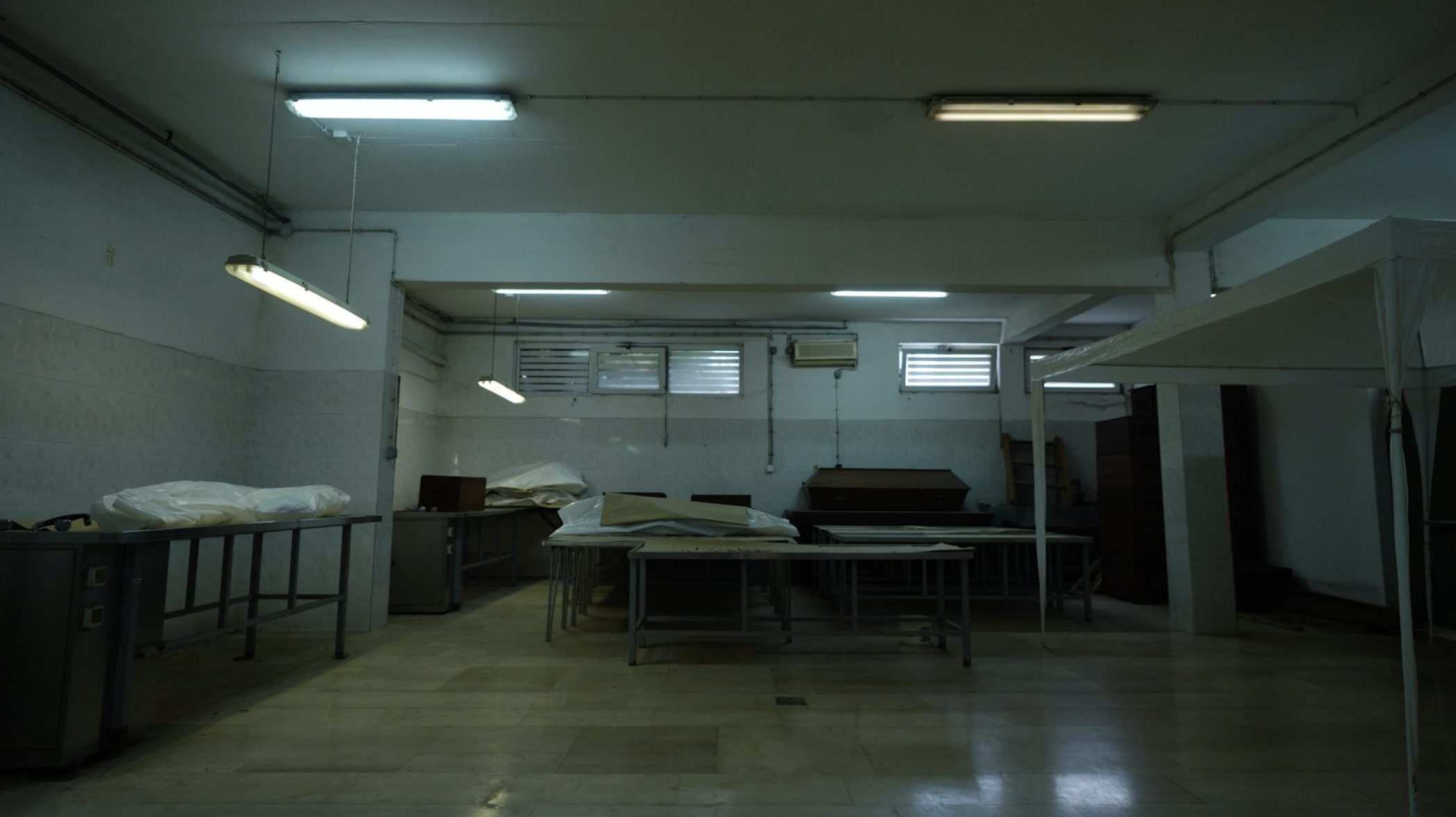This post is also available in: Bosnian
On Monday, 25 years after their alleged war crimes, the Bosnian state court will deliver its verdict on Naser Oric and his former military subordinate Sabahudin Muhic, who are standing trial for allegedly killing prisoners of war in the Bratunac and Srebrenica area.
The charges allege that Oric, who was a commander of Bosnian Army territorial defence units, and Muhic, who was a soldier at the time, killed three Serb captives in the villages of Zalazje, Lolici and Kunjerac in 1992.
The case has been highly controversial because Oric is seen as a hero by many Bosniaks for his wartime defence of Srebrenica, while some Serbs claimed that the charges against him should have been more severe.
The prosecution’s key evidence came from a protected witness codenamed O-1, who testified that he personally saw Oric killing the three captives during Bosnian Army operations against Bosnian Serb forces.
Testifying from Belgrade via video link, with his face blurred to conceal his identity, O-1 told the court that during the operation in the village of Zalazje, Oric hit one of the Serb prisoners – a judge called Slobodan Ilic – in his face and chest before killing him.
“Oric took a knife he held in his belt and swung it towards the neck of the prisoner. The prisoner fell on his knees. Oric then kicked him in the chest, knocking him over,” O-1 said.
Prosecution witness Ibran Mustafic testified meanwhile that Oric told him in May 1993 how he killed Slobodan Ilic.
“He told me arrogantly that he had executed Ilic. He said he fell into his hands together with a group of prisoners and described the way in which he did it,” Mustafic told the court.
“He hit him in the eye… Oric said he sensed fear and then slaughtered him,” he said.
But court expert Rifat Kesetovic, who was asked by the prosecution to prepare an opinion on the cause of Ilic’s death, could not shed light on how exactly the Serb judge was killed, only that he had multiple skull fractures.
“I was unable to determine what caused the injury, whether it was made with a blunt instrument or bullet. A head injury was the likely cause of death,” Kesetovic said.
O-1 further testified that during a Bosnian Army raid on the village of Lolici, a Serb soldier called Milutin Milosevic was captured.
Oric hit the captive then took an automatic rifle and shot him, O-1 said.
O-1 also described a Bosnian Army operation against Bosnian Serb forces in the village of Kunjarac in autumn 1992, saying that five captives were brought to Oric, among them Mitar Savic, who he knew.
“Mitar was cocky to commander Oric. He objected to something. Oric started hitting him. He took a Colt gun and hit him in the chest. Then he shot him in the chest,” the witness said.
He said that Oric shot Savic twice, and then the other defendant, soldier Sabahudin Muhic, also known as Mrco, opened fire too.
But Mitar Savic’s wife Stojanka Savic said that a fighter called Zoran, whose last name she could not remember but who was in a trench with her husband in the village of Kunjerac when he was killed, told her that he was “shot in his mouth” and died on the spot.
Her account contradicted the testimony of O-1, who claimed that Savic was captured, beaten and then shot at close range.
Protected witness’s credibility challenged
Oric’s defence lawyer challenged the credibility of witness O-1, presenting official records indicating that he has been convicted of crimes 11 times in the past.
According to defence lawyer Lejla Covic, the witness has been convicted of fraud, giving false testimony, causing serious injuries, the abuse of social benefits and other crimes.
Covic also disputed the witness’s claims that he was a Bosnian Army soldier.
After the witness said that his commander was called Alija Muskic, the defence presented a document proving that Muskic was never a member of the armed forces.
The defence also provided statements given by the witness previously in which he failed to mention that Oric took part in the killings.
Testifying as a defence witness, Alija Muskic said he lived in Cerska in 1992 and was part of the Civil Protection Unit there – not in Srebrenica, where Oric operated, and not in the armed forces.
“We had nothing to do with the army. I did not participate in any military operation,” Muskic said.
He also denied ever knowing witness O-1.
Defence witness Fadil Salihovic told the court meanwhile that he knew Oric and Muhic, but insisted they were not involved in the Bosnian Army’s raid on Kunjerac.
Salihovic also said that witness O-1 did not participate in the operation in Kunjerac.
Former Territorial Defence unit member Sabit Halilovic, another defence witness, testified in court that while he was at hospital after having been wounded, his unit commander Zulfo Salihovic visited him and said he had killed judge Slobodan Ilic, with whose murder Oric is charged.
Salihovic also testified, saying that he knew all the members of the Territorial Defence’s ‘Suceska’ Unit, to which O-1 claimed to belong.
Sahilovic declared that O-1 was not a member of the unit, and denied knowing him at all.
A prosecution witness, Milomir Lazarevic, testified that Serb troops were captured by the defendant’s unit in Zalazje after fierce fighting in July 1992.
But Lazarevic said that he heard Oric’s voice saying that the captives should not be mistrated: “One of wanted to beat Milisav Ilic. We heard Naser say: “Don’t beat him. We are neither Chetniks nor Ustasas. They will be tried by a court martial,’” he testified.
Unknown Serbs ‘tried to bribe witness’
As well as controversy surrounding the prosecution of Oric, the proceedings were also marred when a protected defence witness codenamed O-2 claimed that someone from Serbia offered him a bribe if he would testify against Oric.
“Two SUVs with Belgrade licence plates parked in front of my house. They turned off the motors. Two man, aged around 30, approached me. They asked me if I was the man they were looking for,” O-2 said.
“They gave me a piece of paper and said, ‘Write down the amount. You and your family will be evacuated.’ They asked me to testify against Oric as a protected witness and say he committed crimes in Zalazje,” he added.
The witness told them he did not want to give false testimony, but then the two vehicles arrived at his house again with their licence plates covered up.
“A blonde woman came. She had Serbian accent. They asked me if I had changed my mind,” the witness said.
He told the court that he said no, and went back into his house.
Before the trial started, Oric’s defence asked the UN tribunal in The Hague to order a halt to the proceedings against Oric, arguing that he had already been tried for and acquitted of war crimes in Srebrenica by the Hague court and should not stand trial for the same crimes twice.
The Hague Tribunal rejected the request, with the judge saying that “the murder charges in the Bosnian indictment fundamentally differ from the murder charges in the Hague indictment with respect to the alleged victims and the nature, time and location of the alleged crime”.
At the trial in Sarajevo, the closing statements from both prosecution and defence focused heavily on whether the testimony offered by protected witness O-1 was genuine or not.
The prosecution said the defendants’ guilt had been confirmed by the witnesses, in particular the “detailed description“ of the killing of judge Ilic given by O-1.
But the defence insisted that that the entire indictment, as well as the prosecution’s evidence, was based on statements by a non-credible witness – 0-1.




